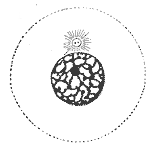| Picture 1: Coronary Heart Disease |
The arteries get narrowed stopping the red blood cells to reach the heart. This process is is called atherosclerosis and the fatty material is called atheroma. The fatty material that builds up in the arteries is mostly low density lipoprotein (LDL) or bad cholesterol. Lipoprotein is a molecule that carries cholesterol throughout the bloodstream. Cholesterol is a fat that is produce by the liver from the saturated fat in the diet.
There are many factors that lead to coronary heart disease. One of them is obesity. If people are obese they have a greater chance of heart failure because fatty material build up more gradually since they intake more fats in their diet than they need. There is a greater chance of a blood clot and a stroke because there is too much fatty material on artery walls.
Obesity also raises blood pressure which also affects the chance of getting a stroke. Since the heart pumps faster and stronger in order to get enough blood it builds up pressure inside the arteries which can damage them and make them weaker. High blood pressure can also be cause by stress even if you are not obese. Your heart will work faster and the pressure will still raise.
Another factor that causes CHD is smoking. Smoking can damage lining of arteries making it easier for fatty material to build up. Also the carbon-monoxide from cigarettes can decrease the amount of oxygen in the blood which makes the hearth pump stronger raising the blood pressure. Also nicotine increases the level of adrenaline in the body which makes the heart beat faster which also raises blood pressure. Blood is also more likely to clot.
People who have diabetes have a much higher chance of getting CHD than people without it. Diabetes causes high levels of glucose in the body which affects the strength of artery walls and makes them more likely to develop fatty deposits.
High levels of cholesterol can also cause CHD. There are two types of cholesterol. The LDL as mentioned before and HDL. HDL is a high density lipoprotein which is also known as good cholesterol. While LDL builds up on the artery walls HDL is cleaning it. It is due to the structure of the lipoproteins as shown in picture 2. High concentration of triglyceride makes LDL stick to artery walls while HDL structure, which contains more protein is dissolving it. The lower the level of HDL the bigger the chance of getting CHD.
 |
| Picture 2: Structures of HDL and LDL |
Coronary heart disease is the leading cause of death as of 2010. Research is being done in order to prevent it by the American Heart Assosiation.
Bibliography:
"Prevention of Sudden Deaths from Heart Disease." American Heart Journal5.3 (2010): 386. Web.
"Diabetes and Your Heart." Diabetes. N.p., n.d. Web. 22 Jan. 2016. <https://www.bhf.org.uk/heart-health/risk-factors/diabetes>.
"Smoking." - Heart Health. N.p., n.d. Web. 22 Jan. 2016. <https://www.bhf.org.uk/heart-health/risk-factors/smoking>.
"Coronary Artery Disease - Coronary Heart Disease." Coronary Artery Disease - Coronary Heart Disease. N.p., n.d. Web. 22 Jan. 2016. <http://www.heart.org/HEARTORG/Conditions/More/MyHeartandStrokeNews/Coronary-Artery-Disease---Coronary-Heart-Disease_UCM_436416_Article.jsp#.VqFMCfmrTIU>.
"HDL Cholesterol: "The Good Cholesterol"" WebMD. WebMD, n.d. Web. 22 Jan. 2016. <http://www.webmd.com/cholesterol-management/hdl-cholesterol-the-good-cholesterol>.
"LDL Cholesterol: How It Effects Your Heart Disease Risk." WebMD. WebMD, n.d. Web. 22 Jan. 2016. <http://www.webmd.com/cholesterol-management/ldl-cholesterol-the-bad-cholesterol>.
"Obesity and Heart Disease." Obesity and Heart Disease. N.p., n.d. Web. 22 Jan. 2016. <http://circ.ahajournals.org/content/96/9/3248.full>.
"Coronary Heart Disease - Causes ." Coronary Heart Disease. N.p., n.d. Web. 22 Jan. 2016. <http://www.nhs.uk/Conditions/Coronary-heart-disease/Pages/Causes.aspx>.
"Heart Disease and Stroke Statistics-2015 Update." Heart Disease and Stroke Statistics-2015 Update. N.p., n.d. Web. 22 Jan. 2016. <http://circ.ahajournals.org/content/131/4/e29.full.pdf+html>












